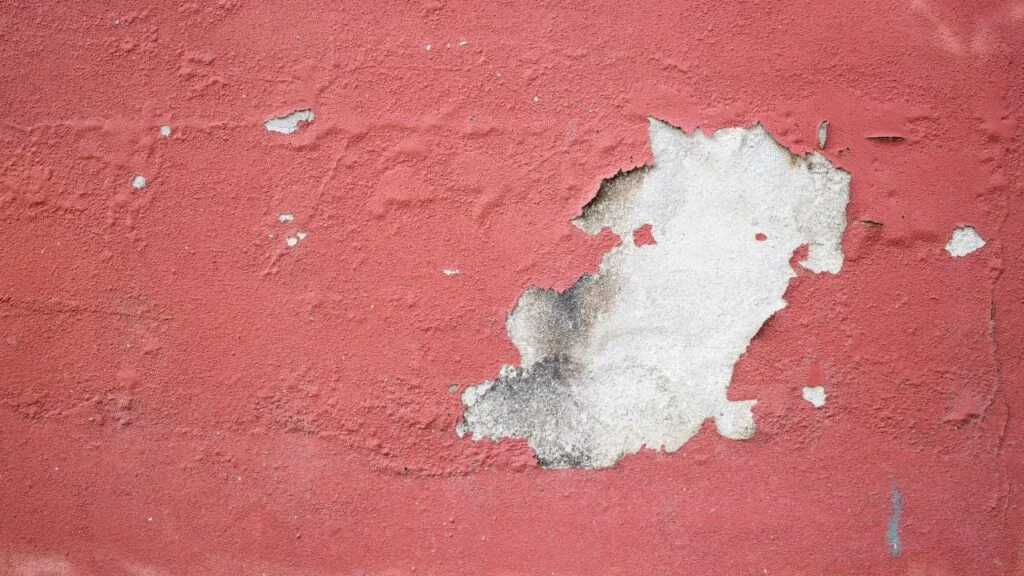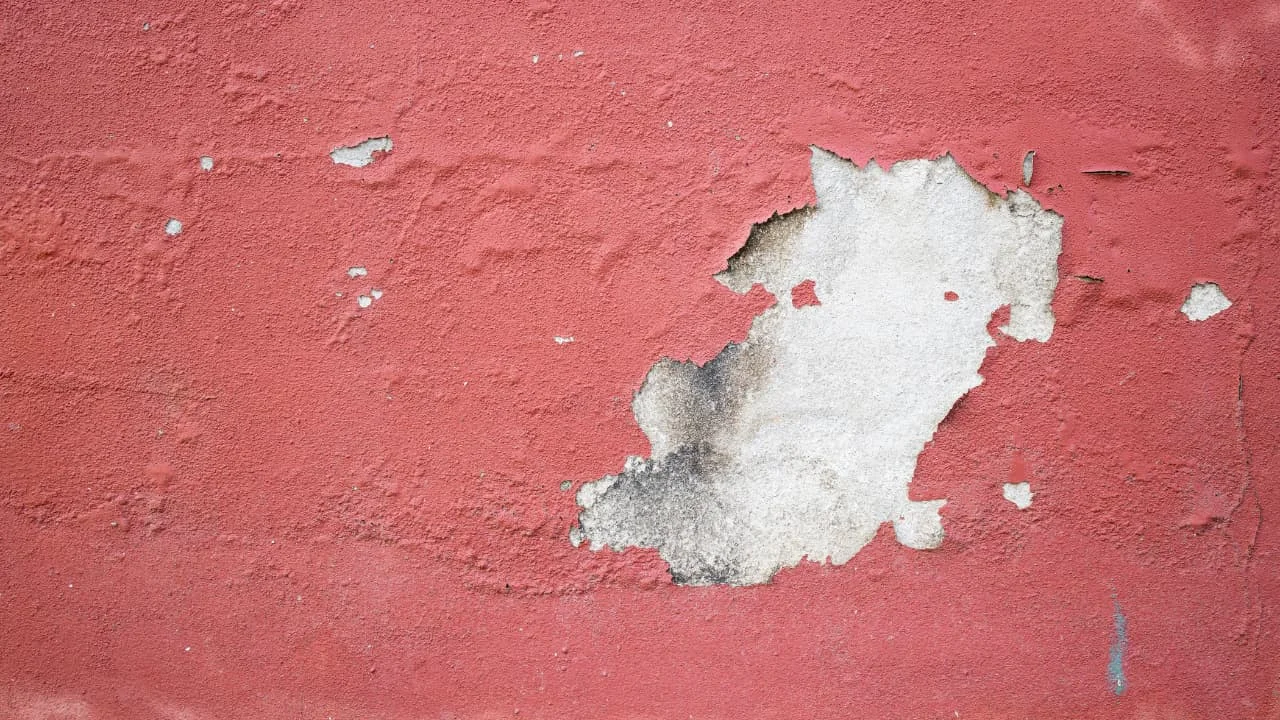Is it time to revamp your living space, but you’re dealing with unsightly chipped paint? Painting over chipped paint can be a challenge, but it’s not impossible.
In this blog post, we’ll explore the causes of chipping paint and discuss whether or not you can successfully cover those blemishes while providing tips for achieving smooth results.
Key Takeaways – Can You Paint Over Chipped Paint?
- Chipped paint is caused by factors such as age, moisture, and wear and tear. It’s important to identify the causes of chipping before attempting any repainting project.
- Painting over chipped paint can be a temporary fix, but it may not provide long-lasting results. Proper surface preparation and choosing the right type of paint are crucial for achieving smooth results that won’t peel off again in the near future.
- To prevent chipping in the future, you should choose high-quality paints that are durable and long-lasting. Being proactive about maintenance can also save you from having to repaint an entire area down the line.
Table of Contents

Understanding Chipped Paint
Chipped paint is a common problem caused by factors such as age, moisture, and wear and tear.
Causes Of Chipped Paint
Chipped paint can be an eyesore, and it’s essential to understand the factors that cause this problem before attempting a touch-up or repainting. One of the main culprits behind chipped paint is poor surface preparation.
Another common cause of chipping is moisture penetration of wall surface – either through poorly sealed walls or high humidity levels within a space. When moisture seeps behind the painted surface, it can weaken the bond between the paint and substrate, leading to peeling and flaking.
For example, bathrooms with insufficient ventilation are notorious for experiencing chipped paint due to excess humidity in these damp spaces.
Identifying Chipped Paint
Chipped paint is a common problem for homeowners, and it’s important to identify it before attempting any repainting project. Chipping can result from different factors, such as moisture, exposure to sunlight, or using low-quality paints.
You can easily spot chipped paint by examining the walls or surfaces. Look out for peeled-off areas that expose the underlying surface layers.
It’s vital to address chipped paint before painting over it because failing to do so could result in poor adhesion of new coats and eventual peeling off. Therefore, always check your surfaces thoroughly for any signs of peeling latex, paint chips, or removed paint before embarking on a repaint job.
Risks Of Painting Over Chipped Paint
Painting over chipped paint may seem like a quick and easy fix, but there are risks to consider. When a thin layer of new paint is applied on top of old peeling paint, the result can be a bumpy and uneven surface.
Another potential risk of painting over chipped paint is that it can hide underlying issues such as water damage or mold growth. By covering up these problems instead of properly addressing them first, you risk further damage to your home’s structure or health hazards for your family.
Painting Over Chipped Paint: Factors To Consider
To successfully paint over chipped paint, it’s important to consider factors such as proper surface preparation, choosing the right type of paint for the paint job, and knowing when not to paint over chipped areas.
Surface Preparation
Before painting over chipped paint, it’s crucial to prepare the surface properly. This involves sanding and cleaning the area to be painted to ensure that there are no rough edges or debris that could interfere with adhesion.
Next, wipe down the sanded area with a damp cloth or sponge to remove any dust or debris. After allowing it to dry completely, apply an appropriate primer designed for covering chipped paint.
Depending on the surface being painted over and the type of finish desired, different types of primers may need to be used.
By ensuring proper surface preparation before repainting damaged areas; you’ll achieve smooth results without having to worry about re-chipping issues later down the line.
Paint Types For Covering Chipped Paint
When it comes to painting over chipped paint, choosing the right type of paint is crucial. Using high-quality latex or oil-based paint can help ensure that your new coat adheres properly and won’t peel off again in the near future.
For larger areas with removed paint, consider using a primer before applying your topcoat. This will help create a smooth surface and improve adhesion for a longer-lasting finish.
For wood surfaces, you may also want to consider using spackle or putty to fill any rough edges before painting over them.
When Not To Paint Over Chipped Paint
If the chipped paint is caused by underlying structural damage or rot, it’s important to address those issues before painting. Otherwise, the problem will persist and your new coat of paint won’t adhere properly.
Additionally, if the chipping is happening in areas with high moisture or humidity levels, simply covering up the chipped paint won’t solve the root cause.
Instead, you’ll need to identify and fix any water leaks or ventilation issues before attempting to repaint. It’s also not recommended to paint over lead-based paint without proper precautions such as testing and encapsulation methods.
Tips For Fixing Chipped Paint
To fix chipped paint on walls, wood, metal, and cars, use spackle or a putty knife to fill in any rough edges before sanding the surface smooth. For larger areas of removed paint, consider using a primer before repainting for better adhesion and durability.
Repairing Chipped Paint On Walls, Wood, Metal, And Cars
Chipped paint can happen on any surface, whether it’s a wall, wood, metal, or even your car. The first step to repairing chipped paint is to clean the area around the chip with soap and water.
For walls, use spackle to fill in the chipped or cracked area and sand it until it’s smooth.
After filling in the chipped area, wait for it to dry completely before applying a fresh coat of primer. This will help the new coat of paint adhere properly. When choosing a color for touch-ups, make sure it matches the existing paint as closely as possible.
Lastly, apply two coats of paint using light strokes until you achieve full coverage and let dry completely before applying another coat if needed.
Preventing Chipped Paint
To prevent chipped paint in the future, there are a few things you can do. First off, make sure to prep the surface properly before painting. This includes cleaning and smoothing the area that will be painted.
Another way to protect and prevent chipping is to be cautious when using objects near freshly painted surfaces, such as doors or furniture.
Additionally, if you notice any small chips or scratches in your painted surfaces over time, tend to them quickly with touch-up paint before they become larger areas of peeling and flaking.
Tips For Painting Over Chipped Paint
Sanding the surface before painting is important to create a smooth base for paint adhesion. Applying primer and choosing the right paint will also prevent future chipping.
Sanding The Surface For Painting
Sanding the surface is an essential step when painting over chipped paint. Before you start painting, make sure to sand down the rough areas with fine-grit sandpaper. Sanding will help create a smooth surface for better paint adhesion and coverage.
To get started, use a sanding block or palm sander to remove any rough edges and flaky bits of old paint from the wall or surface you want to repaint. Be careful not to over sand as it can damage your walls or furniture.
Remember that proper preparation is key when it comes to achieving excellent results when painting over chipped paints.
Applying Primer And Choosing The Right Paint
Before painting over chipped paint, it’s crucial to choose the right primer and paint to ensure a smooth and durable finish. A high-quality bonding primer is ideal for surfaces with peeling or flaking paint as it helps the new paint adhere better.
When choosing a new coat of paint, go for one that has good adhesion and durability to prevent future chipping.
When applying primer, make sure to follow instructions carefully, including drying times between coats. Apply two thin coats rather than one thick one; this will help achieve better coverage without causing drips or unevenness.
Similarly, when applying the topcoat of paint, use light strokes rather than heavy ones so you don’t drag wet areas across dry sections – this can cause streaking and uneven color distribution.
Using The Right Tools And Techniques
When it comes to painting over chipped paint, using the right tools and techniques is crucial for achieving a smooth and flawless finish. First off, start by sanding down any rough edges or peeling areas with a fine-grit sandpaper.
This helps create a clean surface that promotes better adhesion of the new paint.
Next, choose the appropriate brushes or rollers depending on the size of your project and the type of paint being used.
Using high-quality primer and paint can also make all the difference in ensuring professional, long-lasting results.
Overall, taking the time to properly prepare surfaces and selecting the right tools will help ensure that your repainted surfaces look their best with minimal risk of future chipping or cracking.
Conclusion
In conclusion, painting over chipped paint is possible, but it’s important to take the necessary steps for a successful result. Proper surface preparation such as sanding and priming can ensure good adhesion and durability of the new layer of paint.
However, if there are too many layers of old paint or the underlying surface is damaged, it may be better to remove all the old paint before repainting. By following these tips and tricks, you can achieve smooth results with every repaint job on walls, wood, metal, or cars.
FAQs:
Can you paint over chipped paint without prepping the surface?
It is not recommended to paint over patched areas of chipped or peeling paint without properly prepping the surface. This could result in a patchy finish and further damage down the line. Proper preparation entails scraping away any loose chips, sanding the area smooth, and applying a primer before painting.
Is it possible to fix chipped paint without repainting the entire surface?
Yes, fixing chipped paint or loose edges can be done by touching up just that area with fresh paint of the same color using a small brush or roller. However, this may not be ideal for large areas with extensive damage as it may create noticeable inconsistencies in texture and color.
What causes chipping on painted surfaces?
Chipping occurs on painted surfaces when there is poor adhesion between layers of old and new coatings, lack of proper preparation before painting, or due to environmental factors like moisture or extreme temperatures causing expansion or contraction of underlying materials.
How long should I wait before painting over freshly repaired chips?
Allowing enough time for touch-up repairs to completely dry is crucial for achieving optimal results when painting over them. Depending on atmospheric conditions such as humidity levels, drying times may vary but generally waiting at least 24-48 hours after touch-up is suggested before adding additional coats of paint to ensure no smudging or clumping occurs during the application process and prevent future chipping issues from arising again soon thereafter.

